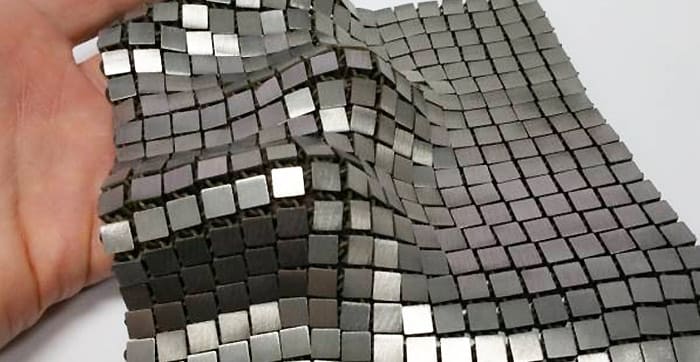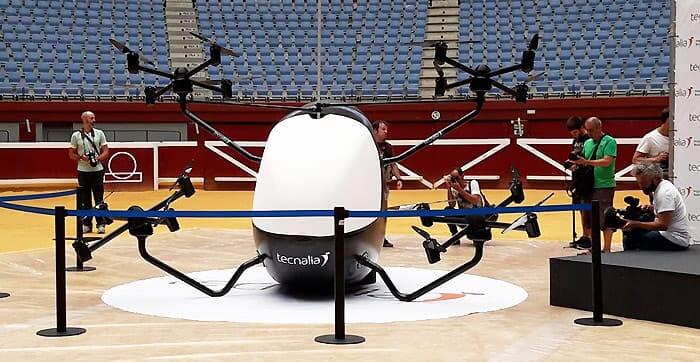Technology in the news
In today’s blog I look at two pieces of tech news from the past few days regarding 4D printing in the field of materials science and the invention of drone taxis as an unmanned passenger transportation system.
Read on for an explanation of these engineering advances and my (unprofessional, of course) view on whether they will be commonplace in the future.
4D Printing
I’ll be honest with you and admit that I hadn’t heard of 4D printing until the other day. In fact, I’m still getting to grips with 3D printing technology, which I think is mind-blowing as it is.
3D printing, in case you didn’t know, is the building of a three-dimensional object through the layering of plastics or polymers, whose form is determined by a computer-aided design (CAD) virtual modelling tool.
The result is you can create almost any 3D shape or structure of any complexity, depending on the size and capacity of the printing device. Small objects and ornaments can be created for domestic use, while other uses include prosthetics in medicine and, on a larger scale, the construction of pre-fabricated homes for affordable housing schemes.

4D printing, however, is the next generation of printing technology, which would see “smart materials” react to external stimuli such as heat and moisture, meaning they could self-repair if broken.
Remember the baddie in Terminator 2 whose body regenerated every time he got shot, stabbed or run over? Well, this is a huge exaggeration of the reaction smart materials would have when altered or changed from their original shape.
The idea is that a rip in a smart fabric will be able to close itself up over time, or a material could mould to the particular shape or surface (think Spiderman’s costume, to stick with the theme of action movies).
Next-level interaction with technology
I suppose we should have seen it coming.
The arrival of the 5G mobile network in telecommunications is another recent example of taking technology to the next level. Although there is a lot of tech jargon associated with the arrival of 5G, key advancements include faster upload and download speeds as well as greater overall connectivity to smart devices and the Internet of Things (IoT) as a whole.
Commentators on digital technologies claim that 5G will “undoubtedly change the way we interact with technology”1. And this hits the nail on the head when it comes to technological transitions from 3D to 4D and 4G to 5G, as well as in other areas of life.
Drone taxis
For example, imagine taking a pilotless drone taxi instead of an Uber to your next dinner party. That certainly is a different interaction.
I remember watching a TED Talk interview with the founder of Tesla and SpaceX, Elon Musk, a few years ago when he talked about the future of passenger transport systems and ways to combat the increasing congestion on the world’s roads.
He laughed off the suggestion that flying cars could be a solution, citing the potential chaos that would result from the collision of aerial vehicles, and instead proposed an ambitious three-layer underground highway system to help ease global car traffic as vehicle ownership continues to increase.
Despite the fact that boring mega-highways through the Earth’s crust sounds like a logistical nightmare to say the least, Musk’s argument does carry some weight, in my view.
In the news
Which is why the news this week that Spanish engineers have developed a driverless flying taxi with four drones as propulsion – which could come into service as soon as 2024 – came as a bit of a shock. Naturally, I assumed the worst from this new technology; immediately mentally preparing myself for the worst-case scenario.

The Aerotaxi, designed to fly at low altitudes across towns and cities at up to 90 kilometres per hour (56 miles per hour), has an interior space of 3.6m2 and has a maximum load capacity of 150 kilos. The market value of these drone taxis is estimated to be as much as €50,000, just in case you’re reading this and already planning your advanced purchase of this gadget.
Flash in the pan technologies?
All signs point towards these two technologies becoming part and parcel of everyday life, barring, in the case of drone taxis, any particularly damaging test results or changes in aviation law. So, in short, probably not flash in the pan technologies.
Personally, and as I'm sure you can gauge from this post, I'm much more excited about 4D printing than I am about drone taxis. Call me old-fashioned, but drone technology is still in its relative infancy and I'm not sure I'm ready for an Aerotaxi just yet.
Then again, ask me in five years when they're ready to fly and I might give you a different answer.
What do you think of these advances? Are you as worried about pilotless drone flight as I am? Or am I being paranoid? Let me know in the comments below!
Sources:
1 https://www.digitaltrends.com/mobile/what-is-5g/
https://www.verdict.co.uk/4d-printing/
 en
en



 Vlaams-Nederlands
Vlaams-Nederlands
0 Comments
Leave a Comment
DISCLAIMER
The opinions and comments expressed by contributors to this Blog are theirs alone and do not necessarily reflect the views of VIVA Homes Under the Sun Ltd, any of its associated companies, or employees; nor is VIVA to be held responsible or accountable for the accuracy of any of the information supplied.
Have you got something to say?